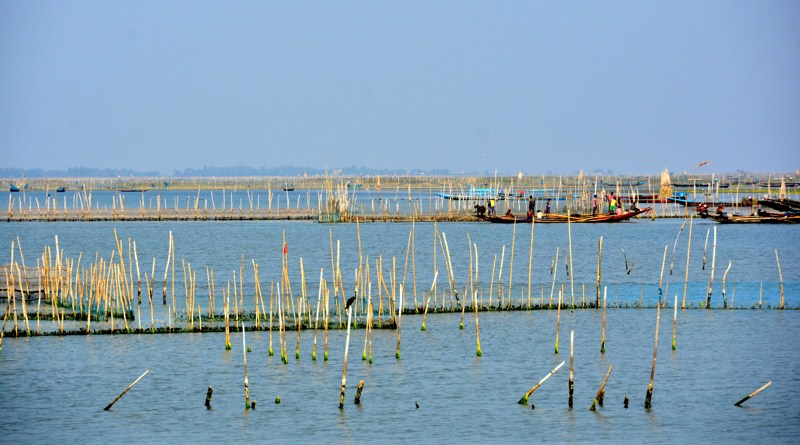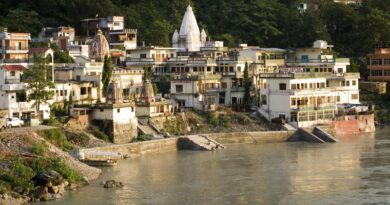Climate-change induced sea level rise may affect several Indian coastal cities

Several Indian coastal cities including Mumbai, Chennai, Mangalore, Kochi and Visakhapatnam could get submerged by rising sea levels, a new report by the Intergovernmental Panel on Climate Change (IPCC) that was used by NASA has said, warning that many of the changes observed in the climate are unprecedented in thousands, if not hundreds of thousands of years, and some of the changes already set in motion, such as continued sea level rise, are irreversible over hundreds to thousands of years.
Scientists are observing changes in the Earth’s climate in every region and across the whole climate system. However, strong and sustained reductions in emissions of carbon dioxide (CO2) and other greenhouse gases would limit climate change, the IPCC report – Climate Change 2021: the Physical Science Basis – launched recently said.
The report provides new estimates of the chances of crossing the global warming level of 1.5°C in the next decades, and finds that unless there are immediate, rapid and large-scale reductions in greenhouse gas emissions, limiting warming to close to 1.5°C or even 2°C will be beyond reach.
The report shows that emissions of greenhouse gases from human activities are responsible for approximately 1.1°C of warming since 1850-1900, and finds that averaged over the next 20 years, global temperature is expected to reach or exceed 1.5°C of warming. This assessment is based on improved observational datasets to assess historical warming, as well progress in scientific understanding of the response of the climate system to human-caused greenhouse gas emissions.
“This report is a reality check,” said IPCC Working Group-I Co-Chair Valérie Masson-Delmotte. “We now have a much clearer picture of the past, present and future climate, which is essential for understanding where we are headed, what can be done, and how we can prepare.”
Using the IPCC data, NASA has created a sea level projection tool that makes extensive data on future sea level rise easily accessible to the public. The tool, hosted on NASA’s Sea Level Portal, will deliver a detailed report for the location based on the projections in the IPCC’s Sixth Assessment Report, released on August 9, which addresses the most updated physical understanding of the climate system and climate change.
Using the NASA tool, every stakeholder can pull up the tool’s layers of maps, choose any global ocean and coastlines, and pick any decade between 2020 and 2150:
The IPCC has provided global-scale assessments of Earth’s climate every five to seven years since 1988, focusing on changes in temperature, ice cover, greenhouse gas emissions, and sea level across the planet. Their sea level projections are informed by data gathered by satellites and instruments on the ground, as well as analyses and computer simulations.
But for the first time, anyone will be able to see a visualization of how sea levels will change on a local level using the new online tool, a granularity that is difficult to capture in the IPCC report itself, said an official statement from NASA.
The US space agency has identified 12 Indian cities that are likely to experience the brunt of climate change and rising sea levels global warming is not contained. The cities are Kandla (1.87 feet, Okha (1.96 feet), Bhaunagar (2.70 feet), Mumbai (1.90 feet); Mormugao (2.06 feet), Mangalore (1.87 feet), Cochin (2.32 feet), Paradip (1.93 feet), Khidirpur (0.49 feet),
Visakhapatnam (1.77 feet), Chennai (1.87 feet) and Tuticorin (1.9 feet).
While these are initial projections at the current rate, if the trends continue by the end of the Century, these coastal cities will go under as much as three feet of water.
“What’s new here is a tool that we are providing to the community, to distribute the latest climate knowledge produced by the IPCC and NASA scientists in an accessible and user-friendly way while maintaining scientific integrity,” said Nadya Vinogradova Shiffer, programme scientist and manager at NASA, who directs NASA’s Sea Level Change science team.
“As the first data-delivery partnership between the IPCC and a federal agency, NASA’s new sea level projection tool will help pave the way for future activities that facilitate knowledge sharing, open science, and easy access to the state-of-the-art climate science. This information is critical to increase climate resilience of nations with large coastal populations, infrastructure, and economies that will be impacted by sea level rise,” said Vinogradova Shiffer.
The tool can display possible future sea levels under several greenhouse-gas-emission and socioeconomic scenarios, including a low-emissions future, a “business as usual” trajectory with emissions on their current track, and an “accelerated emissions” scenario. A low-emission future, for example, would occur if humanity reduces its greenhouse gas emissions, lessening the effects of climate-driven sea level change. The other end of the emission spectrum yields projections with the most rapid rise in sea level, information that could be useful for coastal planning that takes less likely but potentially more destructive possibilities into account, said the NASA statement.
According to the IPCC report, global mean sea level (GMSL) has risen faster since 1900, than over any preceding century in at least the last 3,000 years. The report was prepared by 234 scientists from 66 countries and highlights that human influence has warmed the climate at a rate that is unprecedented in at least the last 2,000 years.
In 2019, atmospheric CO2 concentrations were higher than at any time in at least 2 million years, and concentrations of methane and nitrous oxide were higher than at any time in the last 800,000 years.
Global surface temperature has increased faster since 1970 than in any other 50-year period over a least the last 2,000 years. For example, temperatures during the most recent decade (2011–2020) exceed those of the most recent multi-century warm period, around 6,500 years ago, the report indicates.
But, it is not just about temperature. Climate change is bringing multiple different changes in different regions – which will all increase with further warming. These include changes to wetness and dryness, to winds, snow and ice, coastal areas and oceans, the report noted.
Climate change is intensifying the water cycle. This brings more intense rainfall and associated flooding, as well as more intense drought in many regions. Also, rainfall patterns are getting affected.
In high latitudes, precipitation is likely to increase, while it is projected to decrease over large parts of the subtropics. Changes to monsoon precipitation are expected, which will vary by region.
At the same time, coastal areas will see continued sea level rise throughout the 21st century, contributing to more frequent and severe coastal flooding in low-lying areas and coastal erosion. Extreme sea level events that previously occurred once in 100 years could happen every year by the end of this century, the report warned.



